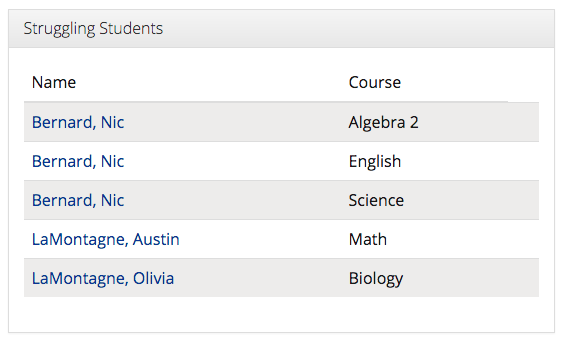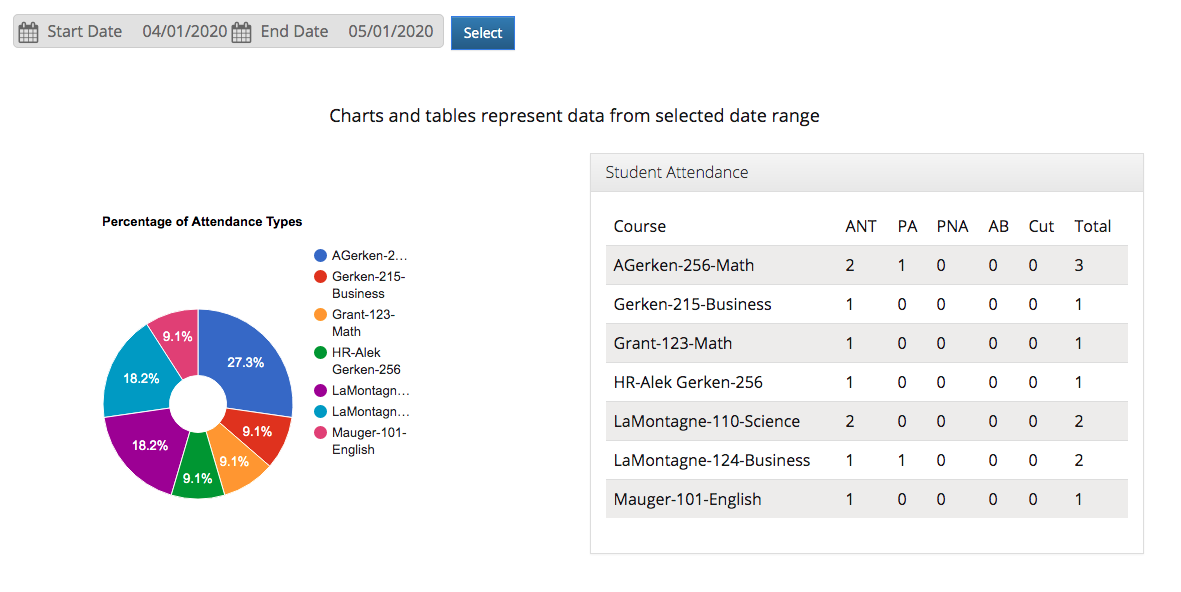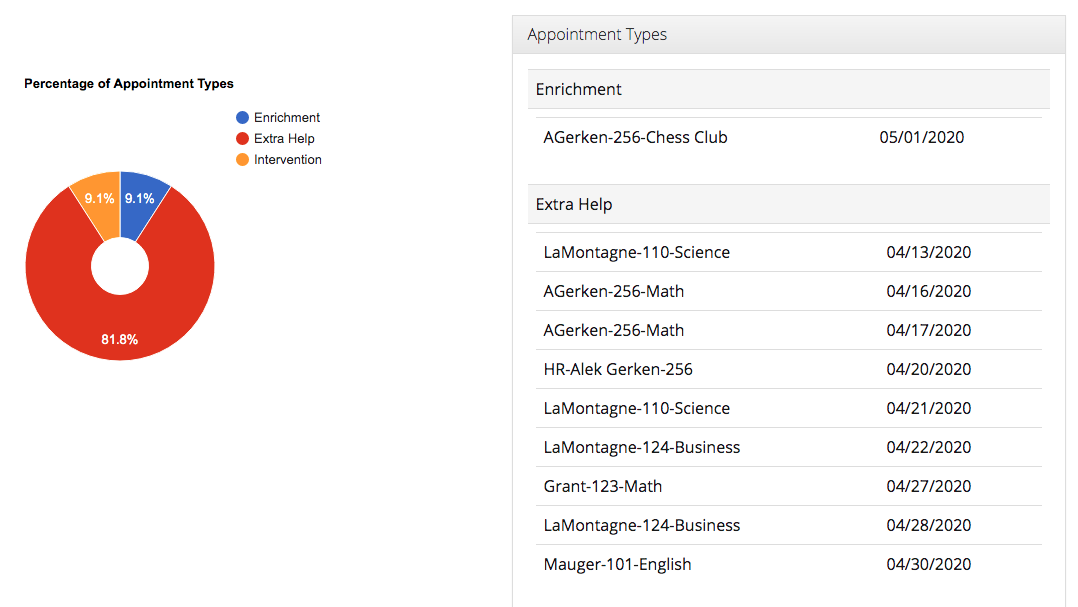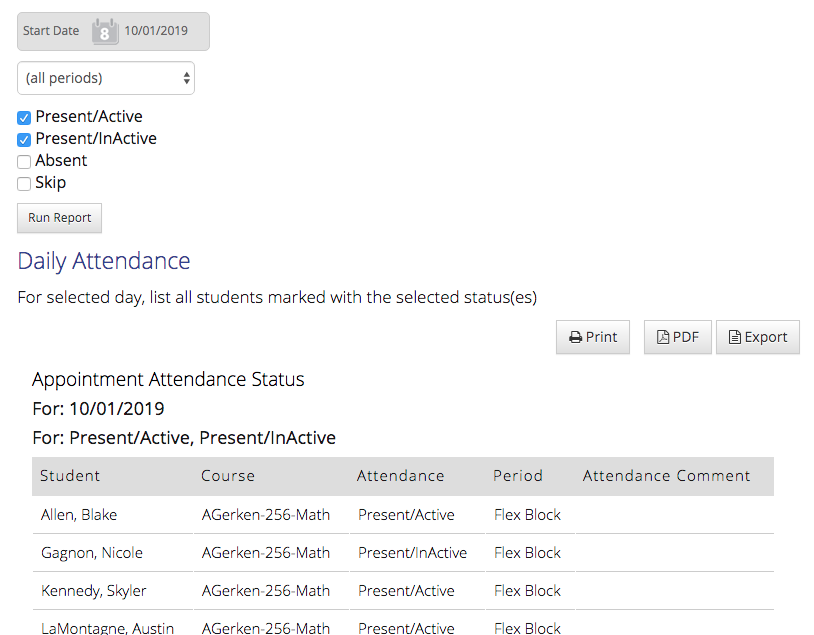Data can tell a story. It has proven the importance of intervention. It has shown that, especially in middle school, an intervention can impact the trajectory of a students’ school career. How can you identify when a student needs intervention? Data can tell you a lot if you can track it. So what type of data do you need to track to know what kind of interventions a student needs, and how do you track it?
Data That Matters
Grades and levels of achievement are one data point that is obvious to track. When a student is failing a class, that is often the time some sort of extra support gets put in place for them. Some schools set a grade threshold that defines a ‘struggling’ student. This way the student gets reached before they begin failing.

However, while grades help you to see how a student is doing across subject areas, do they really tell the whole story? A student’s attendance and engagement in class can tell you a little bit more. Observing a decline in attendance and lack of interest in class can help you check in with a student and provide interventions before the problem escalates into something bigger.
Why do we say attendance matters so much? Consider this statistic about chronic absenteeism, a growing problem across the U.S.
The Education of Omarina, Frontline. Research by Robert Belfanz, John’s Hopkins University
If a student’s life is unstable and they struggle even getting to school, how can they be expected to perform well? Being consistently absent from school is a red flag that something is up.
Tracking engagement matters too. This can tell even more of a student’s story. When taking attendance in Enriching Students, you not only mark a student as absent or present, but you can attach a level of engagement to that as well. Tracking that data allows you to see when a student is maybe present but not actively engaged in what they’re doing.

For example, let’s say you teach math, and that student we mentioned at the outset is struggling in your class. This student’s grades might be plummeting. So the logical step would probably be to schedule them for some math interventions. But is the actual math work the issue? Sparse attendance and lack of overall participation will give you insight that the issue may go deeper than that. Would social-emotional supports be more effective for this student? More than likely.
What’s working, what isn’t
Are your current interventions effective? Is the student even being scheduled for intervention where they need it?
Enriching Students allows you to view a student’s ‘profile’ to see attendance data over time. When you take attendance for your students, these reports are generated automatically. You can see the percentage of courses a student has attended the most in the pie chart on the left in the image, and on the right is a table that will show you the student’s attendance types for the selected date range. By default these are Attendance Not Taken, Present and Active, Present Not Active, Absent, or Cut (ANT, PA, PNA, AB, Cut). Your school can choose to change the names of these values

Set a date range to view what types of appointments the student has been scheduled for, and in what subject area. Have they been attending a lot of math interventions? Is that what they need? Are they doing any enrichment activities? Is it all extra help? And have they been engaged during those appointments? Seeing this data take shape will tell you what has been effective in assisting that student, and what hasn’t.

Evaluation and Getting to Students In Time
Regular evaluation of data can prevent students from getting hit or miss support. Meeting as teams regularly and examine data is so important. Many schools choose to have department-specific, or grade-level specific teams that take care of specific groups of students, to ensure no one gets left behind and that more attention can be given to the needs of each student. Having reliable data to inform these meetings will lead to better decisions and interventions that can be implemented faster.
Says Principal Laura Touchstone of Pine Forest High School in Pensacola, Florida, “The teachers are all the time looking at that real-time data to determine where their students are struggling immediately. Instead of waiting to the end of the nine weeks and they’re like ‘Oh, you failed,’ we are catching them immediately.”
How can you capture and evaluate this data?
Create, export, and print or download reports that include helpful data like attendance and engagement tracking to discuss with your teams. These reports allow you to identify patterns and see which students may be struggling. You can also run reports that show Attendance By Homeroom, or Department, Tardy Students, and other non-attendance related reports.

With the right data, it’s easier to give students the help they need, when they need it. If you don’t have the right information to act on, that can lead to guesswork and slower response time. Fast, accurate data will empower you and your teams to give students meaningful interventions. Having data that allows you to pinpoint exactly where students need help. It also helps you identify the type of intervention that would be most effective. As a result, this means you could schedule them for an intervention or extra help session as soon as possible.





